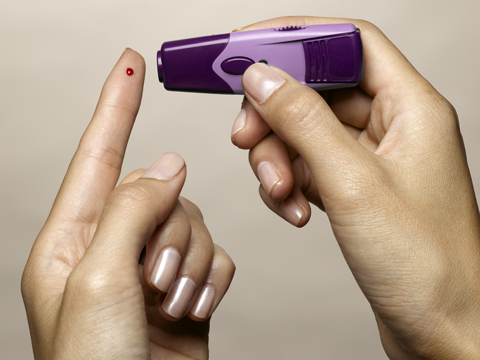 What Is Oral Thrush?
Oral thrush, also known as candidiasis, can occur in anyone of any age, from babies to the elderly. Oral thrush is a condition that occurs when a fungus called candida albicans builds up on the lining of the mouth. The result is white lesions on the tongue or inner cheeks.
What Is Oral Thrush?
Oral thrush, also known as candidiasis, can occur in anyone of any age, from babies to the elderly. Oral thrush is a condition that occurs when a fungus called candida albicans builds up on the lining of the mouth. The result is white lesions on the tongue or inner cheeks.
Oral thrush can sometimes be confused with leukoplakia. But leukoplakia lesions are caused by chronic irritation from rough edges on teeth, fillings or crowns, not by an organism. And leukoplakia lesions develop over time, while thrush lesions may develop suddenly. A thrush infection can spread and involve the roof of the mouth and the gums, where it can cause symptoms such as redness and irritation. See your dentist if you have any type of lesions on your tongue or in your mouth so you can determine the cause of the problem and plan a course of treatment. The goal in treating thrush is to stop the infection from spreading.
Healthy babies and children may not need treatment-the lesions may resolve on their own. Sometimes adding yogurt to you or your childís diet may do the trick and reset the bacterial imbalance caused by the excess amount of the thrush fungus.
People with HIV or other immunosuppressive illness are at increased risk for the infection to spread. If you are in this category, your doctor or dentist may recommend an antifungal medication.
To prevent thrush from occurring or recurring, follow a consistent oral health care routine, and try to include yogurt with live, active cultures in your diet, especially if you take antibiotics for a chronic condition. Frequent use of antibiotics can promote the growth of the Candida fungus because they upset the natural mixture of microorganisms in the body.
The above article is from: OralB.com
Learn more about the importance of saliva.
 Recognizing and Treating Oral Thrush
Oral thrush, also known oral candidiasis, is a condition that occurs when a fungus called Candida albicans builds up on the lining of your mouth.
Recognizing and Treating Oral Thrush
Oral thrush, also known oral candidiasis, is a condition that occurs when a fungus called Candida albicans builds up on the lining of your mouth.
Anyone can develop oral thrush, but babies, young children, older adults, or anyone with a compromised immune system due to an illness such as HIV are more susceptible. Conversely, candidiasis lesions can be an early sign of an HIV infection.
The main symptom of oral thrush is creamy white lesions in the mouth, usually on the tongue or inner cheeks. In some cases, the lesions may appear on the roof of the mouth or on the back of the throat.
Interestingly, oral thrush is not caused by poor oral hygiene. Thrush is caused when the naturally occurring fungi in the body get out of balance, which is why the very old, very young, and people with weak immune systems are at higher risk. Good oral hygiene, however, is an essential part of treating oral thrush. Healthy adults and children can recover fairly easily from the infection, especially if they follow a complete oral care routine of twice-daily tooth brushing and daily proper flossing.
To read the entire article please visit: OralB.com
Palos Hills Dental
Anthony Tisoncik, DDS
9700 South Roberts Road
Palos Hills, IL 60465
(708) 599-2929
HickoryHillsDental.com
Learn more about why gums recede.
Learn more about the treatment for abscessed teeth.
 Symptoms And Treatment Of Tooth Abscess
If you have a toothache that goes beyond mild to moderate tooth pain and reaches a level of severe, throbbing pain, it could be a sign of a tooth abscess. A tooth abscess is a pus-filled lesion at the roots of a tooth, and is caused by an infection. The first sign is a throbbing toothache that won’t go away.
Symptoms And Treatment Of Tooth Abscess
If you have a toothache that goes beyond mild to moderate tooth pain and reaches a level of severe, throbbing pain, it could be a sign of a tooth abscess. A tooth abscess is a pus-filled lesion at the roots of a tooth, and is caused by an infection. The first sign is a throbbing toothache that won’t go away.
At first, the tooth will likely be sensitive to chewing and biting, as well as to heat and cold. You also may develop a fever, swollen lymph nodes in your jaw or neck, or swelling on your face.
If the abscess ruptures, you’ll know because of the nasty-tasting discharge in your mouth. Although the pain may recede if the abscess ruptures, you still need to be treated by a dentist in order to get rid of the infection, save the tooth and avoid complications. If the abscess doesn’t rupture, the infection can spread to other parts of the body. This is not a problem to ignore.
Treatment will likely include draining the abscess if it hasn’t ruptured. Your dentist also may recommend that you take over-the-counter pain relievers, rinse your mouth with warm salt water, and take antibiotics. More severe abscesses may require a root canal to remove infected tissue, and the worst cases require extraction of the tooth.
A tooth abscess can get its start as an untreated tooth cavity, so the best way to prevent an abscess is to prevent the cavity in the first place by following a consistent oral health routine of twice daily tooth brushing and daily flossing. Regular visits to your dentist are important too, especially if you’ve been treated for an abscess. This allows your dentist to confirm that the infection has cleared.
The above article is from: OralB.com
Palos Hills Dental
Anthony Tisoncik, DDS
9700 South Roberts Road
Palos Hills, IL 60465
(708) 599-2929
HickoryHillsDental.com
Learn more about the risks to your oral health during pregnancy.
 Cold Sores and Canker Sores Compared
It’s easy to confuse cold sores and canker sores.
Cold Sores and Canker Sores Compared
It’s easy to confuse cold sores and canker sores.
Unlike a cold sore, a canker sore is not contagious, and it appears on the inside tissues of the mouth rather than the outer surface of the lip (which is where cold sores appear). A canker sore, also known as an apthous ulcer, looks like a small, round or oval lesion that has a white or yellowish center surrounded by red. They tend to be indented, like a crater, rather than raised, like a bump.
Canker sores most often appear on the inside of the cheeks and lips or at the base of the gum. Canker sores are not usually associated with bleeding gums, so if you are experiencing bleeding gums you should see your dentist to be evaluated for possible gum disease.
The majority of canker sores are mild. Mild canker sores are less than one-third of an inch long and usually heal on their own after a few weeks.
But major apthous ulcers, defined as larger than 10 mm in size, can take more than a month to heal and can cause scarring when they finally do heal. So it’s important to visit your doctor or dentist if you have a canker sore that has persisted for more than a few weeks. These large ulcers are most common in young adults after puberty, and they are more likely to recur than smaller sores. Older adults are more prone to herpetiform lesions, in which dozens of tiny lesions group together to form a large ulcer.
The exact cause of canker sores remains uncertain, but possible factors include an allergic reaction to bacteria in the mouth, a minor injury to the inside of the mouth due to dental work or poorly fitting dental appliances, food allergies or health problems, such as celiac disease and inflammatory bowel diseases.
Although most canker sores resolve on their own, if you have a large or stubborn lesion, your dentist may prescribe an antibiotic mouth rinse, topical paste to apply to the lesion, or a nutritional supplement if poor nutrition may be the cause of the canker sore.
The above article is from: OralB.com
Palos Hills Dental
Anthony Tisoncik, DDS
9700 South Roberts Road
Palos Hills, IL 60465
(708) 599-2929
HickoryHillsDental.com
Learn more about dental care for people with special needs.
 What Are TMJ Diseases And Disorders?
TMJ diseases and disorders are a group of conditions that cause pain in and around the jaw joint (called the Temporomandibular Joint or TMJ) and nearby muscles. Jaw problems affect a person's ability to speak, eat, chew, swallow and even breathe.
What Are TMJ Diseases And Disorders?
TMJ diseases and disorders are a group of conditions that cause pain in and around the jaw joint (called the Temporomandibular Joint or TMJ) and nearby muscles. Jaw problems affect a person's ability to speak, eat, chew, swallow and even breathe.
What Are Symptoms Of TMJ?
Pain is the most common symptom of TMJ; however, some people have no pain but still have problems using their jaws. Specific symptoms include:
Face pain
Pain in the jaw joint and nearby areas, including the ear
Back pain
Inability to open the mouth comfortably
Clicking, popping or grating sounds in the jaw joint
Locking of the jaw when attempting to open the mouth
Headaches
A bite that is uncomfortable or feels “off”
Swelling on the side of the face, neck or shoulder
Other symptoms may include ringing in the ears, decreased hearing, dizziness and vision problems.
Keep in mind that occasional discomfort in the jaw joint or chewing muscles is common and is not a cause for concern. Many people with TMJ problems get better without treatment. Often the problem goes away on its own in several weeks to months.
To read the entire article please visit: OralB.com
Palos Hills Dental
Anthony Tisoncik, DDS
9700 South Roberts Road
Palos Hills, IL 60465
(708) 599-2929
HickoryHillsDental.com
Learn more about Bad Breath, which is also known as Halitosis.
 I have diabetes. Will I get gum disease
Diabetes is a chronic disease which affects your body's ability to process sugar. The resulting high blood sugar can cause problems with your eyes, nerves, kidneys, heart and other parts of your body. Diabetes can also lower your resistance to infection and can slow the healing process. If you have diabetes, you are at greater risk of developing some oral health problems, including gum disease, so it's important that you are extra diligent with your oral health.
I have diabetes. Will I get gum disease
Diabetes is a chronic disease which affects your body's ability to process sugar. The resulting high blood sugar can cause problems with your eyes, nerves, kidneys, heart and other parts of your body. Diabetes can also lower your resistance to infection and can slow the healing process. If you have diabetes, you are at greater risk of developing some oral health problems, including gum disease, so it's important that you are extra diligent with your oral health.
The above article is from: MouthHealthy.org
Palos Hills Dental
Anthony Tisoncik, DDS
9700 South Roberts Road
Palos Hills, IL 60465
(708) 599-2929
HickoryHillsDental.com
Learn more about Periodontics, which is the treatment of the tissue (gums) supporting and surrounding the teeth..
 Bad breath can be an indicator of gum disease
Persistent bad breath or a bad taste in your mouth can be an indicator of gum disease and other oral diseases so it is important that you uncover whatís causing the problem. If constantly have bad breath, make an appointment to see your dentist. Regular checkups allow your dentist to detect any problems as your bad breath may be the sign of a medical disorder. If your dentist determines that your mouth is healthy, you may be referred to your primary care physician.
Bad breath can be an indicator of gum disease
Persistent bad breath or a bad taste in your mouth can be an indicator of gum disease and other oral diseases so it is important that you uncover whatís causing the problem. If constantly have bad breath, make an appointment to see your dentist. Regular checkups allow your dentist to detect any problems as your bad breath may be the sign of a medical disorder. If your dentist determines that your mouth is healthy, you may be referred to your primary care physician.
The above article is from: MouthHealthy.org
Palos Hills Dental
Anthony Tisoncik, DDS
9700 South Roberts Road
Palos Hills, IL 60465
(708) 599-2929
HickoryHillsDental.com
Learn more about Scaling and Root Planing to remove tartar and plaque below the gum line
 Bleeding gums during pregnancy is normal
While it’s true that some women develop a condition known as “pregnancy gingivitis,” it’s not true that everyone experiences this. You can help prevent this condition by taking extra care during your brushing and flossing routine. Your dentist may recommend more frequent cleanings to prevent this.
Bleeding gums during pregnancy is normal
While it’s true that some women develop a condition known as “pregnancy gingivitis,” it’s not true that everyone experiences this. You can help prevent this condition by taking extra care during your brushing and flossing routine. Your dentist may recommend more frequent cleanings to prevent this.
The above article is from: MouthHealthy.org
Palos Hills Dental
Anthony Tisoncik, DDS
9700 South Roberts Road
Palos Hills, IL 60465
(708) 599-2929
HickoryHillsDental.com
Learn more about Endodontics, which is the treatment of the pulp and nerves of a tooth.
 Having gum disease means I will lose my teeth
Not so! You don’t have to lose any of your teeth to gum disease if you practice good oral hygiene. That means brushing your teeth twice a day, cleaning between your teeth daily, eating a healthy diet, and scheduling regular dental visits. Even if you are diagnosed with gum disease, your dentist can design a treatment plan to help you keep it under control.
Having gum disease means I will lose my teeth
Not so! You don’t have to lose any of your teeth to gum disease if you practice good oral hygiene. That means brushing your teeth twice a day, cleaning between your teeth daily, eating a healthy diet, and scheduling regular dental visits. Even if you are diagnosed with gum disease, your dentist can design a treatment plan to help you keep it under control.
The above article is from: MouthHealthy.org
Palos Hills Dental
Anthony Tisoncik, DDS
9700 South Roberts Road
Palos Hills, IL 60465
(708) 599-2929
HickoryHillsDental.com
Learn more about what the American Dental Association has to say about the role played by your Dental Assistant!
 I don't have cavities so I can't have gum disease
Being cavity-free doesnít ensure you are in the clear where gum disease is concerned. Thatís because gum disease is painless and many people have no idea they have it. Gums that bleed easily or are red, swollen or tender is a sign of gingivitis, the earliest stage of gum disease and the only stage that is reversible. When caught early gingivitis can usually be eliminated by a professional cleaning at the dental office, followed by daily brushing and flossing.
I don't have cavities so I can't have gum disease
Being cavity-free doesnít ensure you are in the clear where gum disease is concerned. Thatís because gum disease is painless and many people have no idea they have it. Gums that bleed easily or are red, swollen or tender is a sign of gingivitis, the earliest stage of gum disease and the only stage that is reversible. When caught early gingivitis can usually be eliminated by a professional cleaning at the dental office, followed by daily brushing and flossing.
The above article is from: MouthHealthy.org
Palos Hills Dental
Anthony Tisoncik, DDS
9700 South Roberts Road
Palos Hills, IL 60465
(708) 599-2929
HickoryHillsDental.com
Learn more about what the American Dental Association has to say about the role played by your Dental Hygienist!
 Gum disease is not that common
On the contrary, gum disease is extremely common. According to the Centers for Disease Control and Prevention, half of adults age 30 and older suffer from some form of gum disease. Gum disease, an infection of the tissues that surround and support your teeth, is caused by plaque, the sticky film of bacteria that is constantly forming on our teeth. Plaque that is not removed with thorough daily brushing and cleaning between teeth can eventually harden into calculus or tartar.
Gum disease is not that common
On the contrary, gum disease is extremely common. According to the Centers for Disease Control and Prevention, half of adults age 30 and older suffer from some form of gum disease. Gum disease, an infection of the tissues that surround and support your teeth, is caused by plaque, the sticky film of bacteria that is constantly forming on our teeth. Plaque that is not removed with thorough daily brushing and cleaning between teeth can eventually harden into calculus or tartar.
The above article is from: MouthHealthy.org
Palos Hills Dental
Anthony Tisoncik, DDS
9700 South Roberts Road
Palos Hills, IL 60465
(708) 599-2929
HickoryHillsDental.com
 What Is Oral Thrush?
What Is Oral Thrush?









